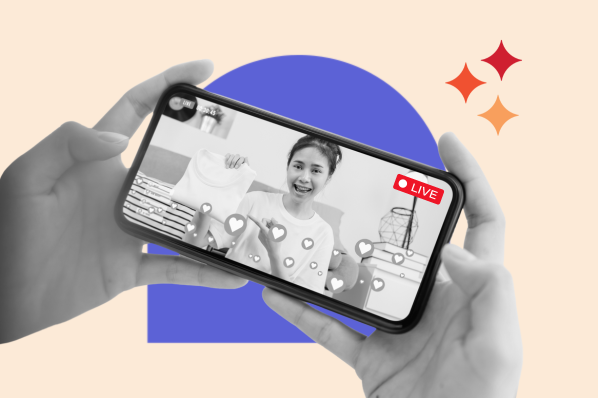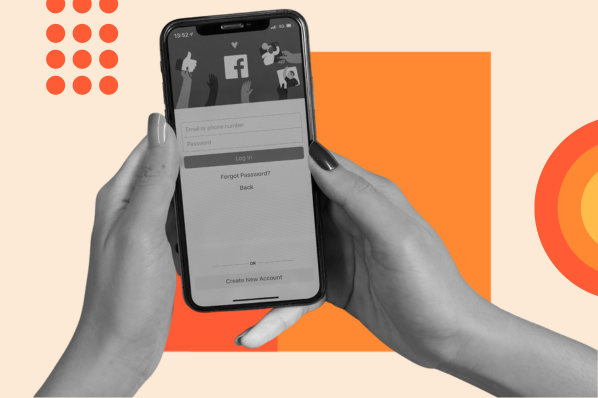How to Analyze Facebook Data
Facebook Insights is separated into two main categories: Audience Insights and Page Insights.
- Audience Insights gives metrics about your Facebook audience, which helps you create relevant content, improve ad targeting, and attract more people to your Page.
- Page Insights shows analytics for your Page, so you can see which posts are performing well and which aren't.
This post focuses on Audience Insights, to help you understand both existing and potential customers. For an in-depth look at how to gather information from Page Insights, check out this guide to Facebook Marketing.
To access the data gold mine in Audience Insights, you first have to create a business Page. Once your Page is set up, navigate to Audience Insights by clicking Analyze and Report in your Business Tools menu. Now comes the sleuthing. Pull up your company's target audience profile for reference, because it's time to do research.
Step 1: Choose your audience.
A pop-up will appear and ask you to pick between the following options:
- Everyone on Facebook: Start here for information to refine your target audience or attract new people to your Page.
- People connected to your Page: Click this one to learn more about everyone who likes your Page to see if your target audience is showing up.
This part requires some strategy. Are you using Insights to build a buyer persona, see if your strategy is attracting the right people, learn about your audience's interests, or something else entirely? By having a goal in mind, it's easier to put the information to use.
Step 2: Filter to fit your goals.
With your goal set, it's time to narrow down the audience. You can filter based on:
- Location
- Age and gender
- Interests
- Page connections
1. Location
Knowing where in the world your audience lives is helpful for many reasons. If you're an online shop looking to expand, maybe you want to learn whether a specific country is interested in your products.
If your company has a physical location, select your city for relevant local metrics. And if you're not bound to any location constraints, keep it open by including countries worldwide.
2. Age and gender
All Facebook users must be 18 years and older, so keep that in mind when evaluating audiences. If you have a specific buyer persona you're researching, filter according to that age range.
But if you're looking to expand your audience, it's worthwhile to extend your age range or consider both genders to see if you're missing out on potential customers.
3. Interests
This is where filtering gets fun — and a little complicated. Keep your search broad by selecting a handful of common interests, like food and reading, or select dozens of interests for a focused pool of people.
You have freedom to play with drop down filters or type anything that comes to mind into the search bar. Cooking, Entertainment, Adventure, Flying, Tech, Cake.
The list goes on, so let your imagination run wild. Just keep an eye on the number of people in your audience as you refine. If it drops below 1,000 people, Facebook won't populate the data.
4. Page Connections
This filter shows the top "liked" Pages by people within your audience profile. If you're scouting for competitors, this can let you know who to watch. Maybe you're looking for content inspiration, and browsing connected Pages will give you ideas for a campaign collaboration or promotional giveaway. Either way, it's good to know what other Pages pop up in your audience's newsfeed.
Step 3: Understand your audience.
Sound the applause — you've filtered down your audience profile. Now it's time to dig in further to four categories: Demographics, Page Likes, Location, and Activity.
Demographics
Facebook Insights lets you go beyond the basics to see audience information including Language, Relationship Status, Education, Job Titles, and Market Segments. Let's say you're a new food blogger targeting men ages 18-32.
If you plug in that information, you can get a detailed look at what your audience does for work, how educated they are, or even whether they're primarily cooking for one or more people.
If your ideal audience turns out to largely be single with time-consuming office jobs, this can help focus your content strategy.
Maybe your audience would like a post about easy lunch ideas for work or meals that are even better as leftovers. I'm generalizing here, but the more you dig into demographics, the more data you have to hone your marketing efforts.
Page Likes
Similar to the Interests filter, this option shows what your audience likes. Check out the Top Categories to learn what people care about the most, with options like Movies, Charities, Companies, Music, Public Figures, News and Media, and Products.
Maybe those men whipping up meals for one are interested in TV series like "The Chef Show" or "Chef's Table." If you were to create a blog post round-up of your favorite cooking shows or episodes, it would likely do well among that audience. The key here is to look at what content is relevant both in and out of your industry to review competitors and connected interests.
Location
Use this filter to explore the top countries, cities, and languages of your audience profile. Say you're based in the United States but discover your audience has a major presence in Montreal, Canada.
It could be worth adjusting your marketing efforts to include content that speaks to both Americans and Canadians. And if you do expand your audience, you may even consider adding a French language option to your website to cater to Québécois customers.
Activity
See how active your audience is compared to the average Facebook user. The most important information in this section is the activity within the past 30 days, broken down by actions like Comments, Posts Liked, Posts Shared, and Ads Clicked.
Maybe you're interested in running Facebook Ads but are unsure if anyone in your audience would click. With the Activity data, you have a better idea of how many people would take action. For a more detailed look at how to analyze Facebook Ad performance, take a look at this guide to Facebook Advertising.
Explore more Facebook Insights
Now you can wield the power of Audience Insights to help you build buyer personas, hone in your target audience, and expand your customer reach. But if you're on a research roll, you can explore more metrics under Page Insights to see how your content is performing, what people are resonating with, and what posts to promote.
So the next time you question whether you're attracting the right followers or are looking for out-of-the-box ideas to engage your audience, pull up Facebook Insights and put the data to work.
Facebook Marketing








![22 Facebook Stats to Know in 2023 [+HubSpot Data]](https://53.fs1.hubspotusercontent-na1.net/hubfs/53/Untitled%20design%20(8)-1.jpg)
![How to Create a Facebook Group for Your Business [+ Why You Should]](https://53.fs1.hubspotusercontent-na1.net/hubfs/53/Copy%20of%20Featured%20Image%20Template%20Backgrounds-Jun-30-2023-05-58-51-2746-PM.png)
![Facebook Insights: A Beginner's Guide [+ Step-by-Step Instructions]](https://53.fs1.hubspotusercontent-na1.net/hubfs/53/Untitled%20design%20(38).jpg)

![11 Facebook Cover Photo Size & Design Best Practices [Templates]](https://53.fs1.hubspotusercontent-na1.net/hubfs/53/facebook%20cover%20photo%20size.jpg)